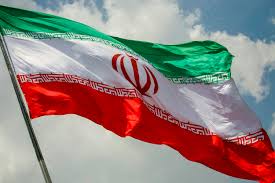World leaders mounted a coordinated diplomatic pressure against President Donald Trump’s escalating trade war during the Group of Seven summit in Canada’s Rocky Mountains, with participants warning that his protectionist policies threaten to destabilize the global economy and inadvertently strengthen China’s position on the world stage.
The high-stakes gathering, hosted by Canada amid careful efforts to avoid provoking Trump’s well-documented temperament, became a forum for America’s closest allies to make their case against the punishing tariff regime that has already imposed a 10 percent baseline levy on most G7 nations, with additional penalties targeting European and Japanese automotive, steel, and aluminum sectors.
Diplomatic Pressure Mounts
The summit’s urgency was underscored by the looming July 9 deadline, when the United States is set to impose what officials describe as “stinging reciprocal tariffs” on dozens of countries still scrambling to negotiate trade deals with Washington. The deadline has created a frantic diplomatic scramble, with nations from Mexico to South Korea seeking to avoid the economic fallout.
“Several participants asked to end the tariff dispute as soon as possible,” a senior German official revealed, speaking on condition of anonymity. The official characterized the dispute as weakening G7 economies and warned it would “in the end only strengthen China”—a pointed reference to how trade conflicts among Western allies could benefit America’s primary strategic rival.
European Commission President Ursula von der Leyen delivered perhaps the most direct challenge to Trump’s trade philosophy, arguing before the assembled leaders that “tariffs—no matter who sets them—are ultimately a tax paid by consumers and businesses at home.” Her comments struck at the heart of Trump’s trade narrative, which frames tariffs as payments made by foreign competitors rather than costs borne by American consumers.
Mixed Results in Bilateral Talks
Trump’s approach to the summit reflected his preference for bilateral dealmaking over multilateral consensus-building. The president formally signed a trade agreement with Britain—the first nation to secure a pact avoiding his threatened “crushing levies”—though the ceremony was marked by an awkward moment when the paperwork was scattered across the ground.
“I like them. That’s the ultimate protection,” Trump told reporters after meeting with British Prime Minister Keir Starmer, referring to tariffs with characteristic bluntness.
The results of other bilateral meetings proved more mixed. Canadian Prime Minister Mark Carney emerged from talks with Trump, suggesting both sides could reach a “trade truce” within 30 days, offering hope for America’s northern neighbor, which has been hit with additional levies in recent months that have thrown its economic future into uncertainty.
Japanese Prime Minister Shigeru Ishiba struck a more cautious tone after his 30-minute discussion with Trump, acknowledging that “there are still some points where both sides disagree” and that no comprehensive agreement had been reached.
Broader Implications
The summit’s dynamics illustrated the broader challenge facing the international community as it grapples with Trump’s return to his signature “America First” trade policies. French President Emmanuel Macron reportedly made a direct appeal to Trump to “quickly end the trade conflict once and for all,” while von der Leyen secured a one-on-one meeting to discuss trade issues, later posting on social media that teams had been “instructed to accelerate their work to strike a good and fair deal.”
The gathering’s significance was somewhat diminished by Trump’s decision to cut his attendance short due to the Iran crisis, disappointing hopes that non-G7 leaders from South Korea, India, Brazil, and South Africa would have opportunities to engage directly with the American president.
The trade representative presence of Jamieson Greer in Trump’s delegation signaled the administration’s seriousness about the negotiations, even as the compressed timeline and Trump’s early departure limited opportunities for breakthrough agreements.
Looking Ahead
With dozens of countries racing against the July 9 deadline and Mexico seeking to renegotiate the North American Free Trade Agreement, the summit highlighted both the urgency of resolving trade tensions and the fundamental disagreement over economic philosophy between the United States and its traditional allies.
The warning from German officials that the dispute could ultimately benefit China resonated throughout the gathering, suggesting that America’s allies view the trade war not just as an economic threat but as a strategic miscalculation that could undermine Western cohesion in the face of broader geopolitical challenges.
As leaders departed the Canadian Rockies, the fundamental question remained whether Trump’s preference for bilateral deals and tariff-based leverage could be reconciled with his allies’ vision of multilateral trade cooperation—a tension that will likely define international economic relations in the months ahead.
WHAT YOU SHOULD KNOW
At the G7 summit in Canada, world leaders united in pressuring President Trump to abandon his escalating trade war, warning that his tariff policies threaten global economic stability and could inadvertently strengthen China.
With a July 9 deadline looming for even steeper U.S. tariffs, dozens of countries are scrambling to negotiate deals to avoid economic fallout. While Trump secured a trade agreement with Britain, broader tensions remain unresolved, highlighting a fundamental divide between America’s “tariff-first” approach and its allies’ preference for multilateral cooperation.
The summit underscored how trade conflicts among Western nations risk weakening their collective position against strategic rivals like China.












